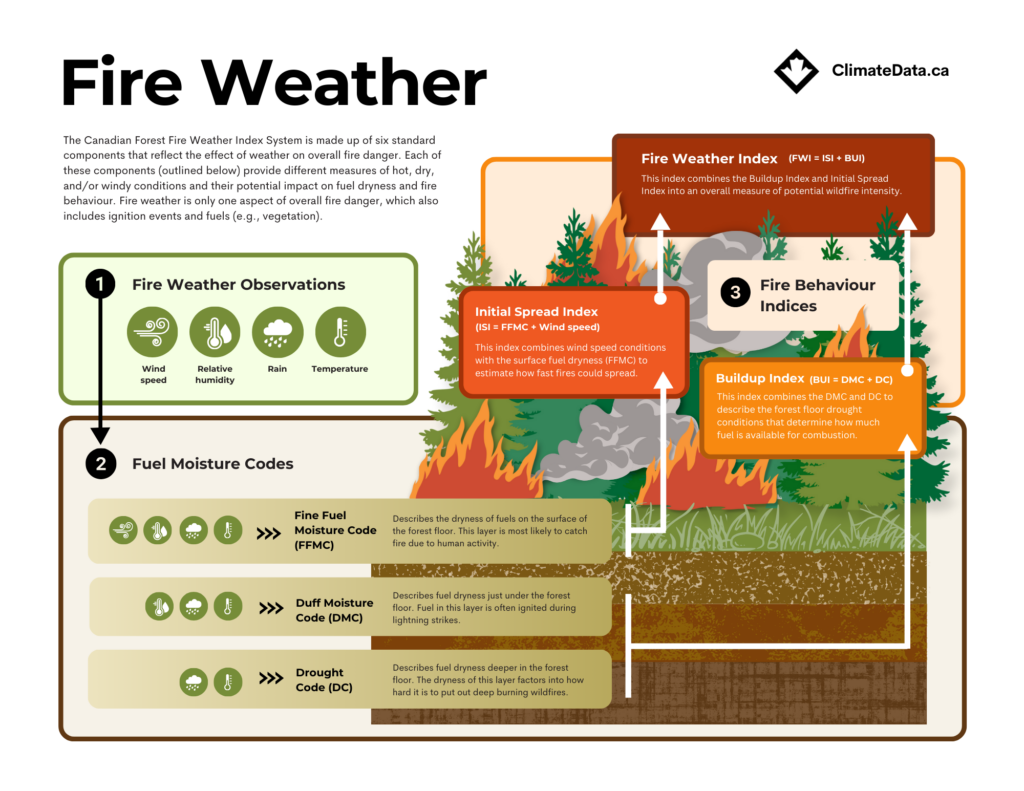What is the Canadian Forest Fire Weather Index System?
Canadian forest fire professionals use the Canadian Forest Fire Danger Rating System (CFFDRS) to estimate wildfire danger, or the potential for wildfire ignition, spread, and intensity. The CFFDRS considers all the factors in the fire regime triangle, as well as other wildfire controls like topography (landscape features). Within the CFFDRS, fire weather is described by a system called the Canadian Forest Fire Weather Index (FWI) System. Because it is widely used for wildfire planning in Canada, the future fire weather data provided in the Fire Weather Projections application is based on this system. Understanding FWI System basics is one important part of understanding future wildfire danger.The FWI System is comprised of codes and indices that reflect the potential impact of weather on different aspects of wildfire. Each of these, described below, provides different measures of hot, dry and/or windy conditions and their potential impact on wildfire.The first three FWI System components are called the fuel moisture codes, because they describe the dryness of wildfire fuel at different layers of the forest floor based on weather conditions.6
- The Fine Fuel Moisture Code (FFMC) describes the dryness of fuels on the surface of the forest floor. This layer is most likely to catch fire due to human activity.
- The Duff Moisture Code (DMC) describes fuel dryness just under the forest floor. Fuel in this layer is often ignited during lightning strikes.
- The Drought Code (DC) describes fuel dryness deeper in the forest floor. The dryness of this layer factors into how hard it is to put out deep burning wildfires.7
The last three FWI System components describe how wildfires might behave, if started.
- The Buildup Index (BUI) combines the DMC and DC to describe the forest floor drought conditions that determine how much burnable material is available as wildfire fuel.
- The Initial Spread Index (ISI) combines wind conditions with surface fuel dryness (FFMC) to estimate how fast fires could spread.
- The Fire Weather Index (FWI) combines BUI and ISI into an overall measure of potential wildfire intensity.8,9
Each of the FWI System codes and indices become larger as the weather becomes drier, hotter, and/or windier – as fire weather gets worse. Due to differences in forest type (the wildfire fuel), FWI System values are interpreted differently depending on the region. For example, each Province and Territory uses the FWI System in slightly different ways to understand fire danger (e.g., different thresholds for “extreme” fire danger). Knowledge of regional characteristics is key for using FWI System values in local planning.











